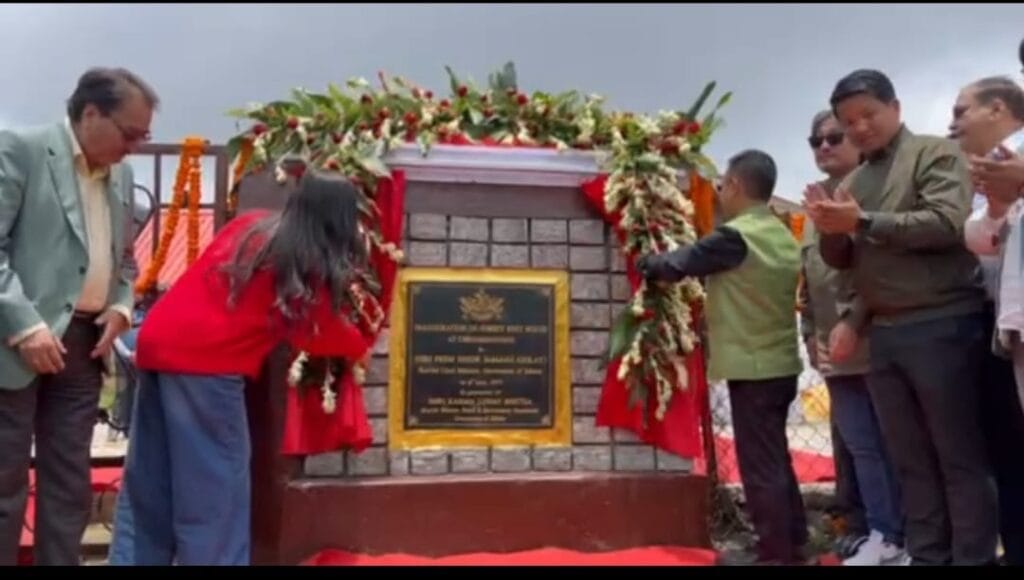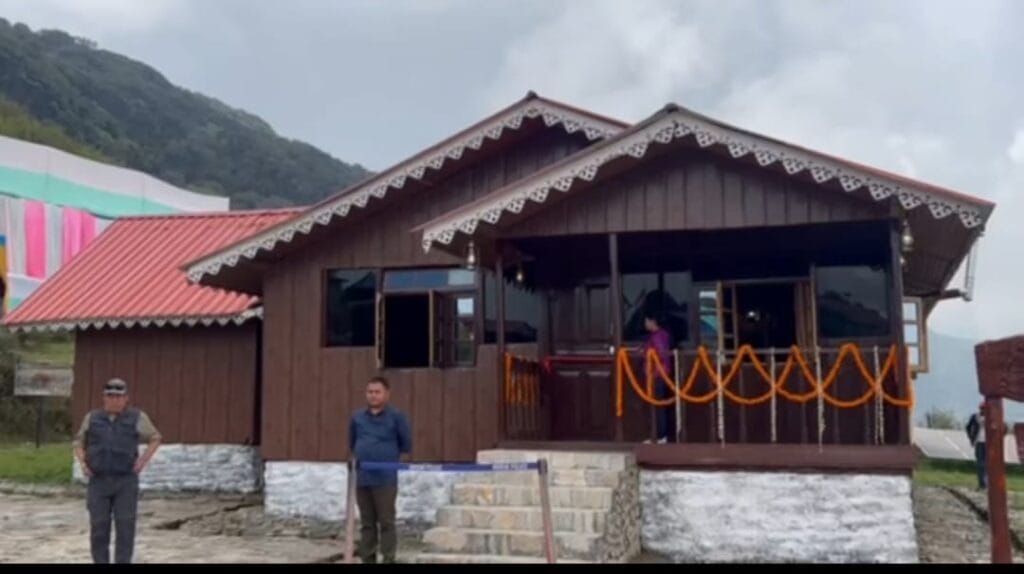Sikkim Chief Minister Prem Singh Tamang visited the Indo-Nepal border situated at Chewabhanjyang on June 6 to push for Multi-Trade corridor at the Indo-Nepal Border.
The Chewabhanjyang Pass is also one of the important and popular passes on the Indo-Nepal border. It lies on the Indo-Nepal border, a famous trade route connecting many villages in the remote and extreme western part of Sikkim, India, with the remote and extreme eastern part of Nepal.

During CM Tamang’s first visit to the Indo-Nepal border, he inaugurated a newly constructed forest guest house at the border adjacent to an existing tourism guest house, which houses the Sikkim Armed Police.

Addressing the media after the inauguration, CM Tamang shared his plans and objectives to establish a multi-trade corridor at the Indo-Nepal Border in the future. He said, “We are considering opening a multi-trade corridor at Chewabhanjyang. The open border needs to become a commercial border, an integrated border that benefits people from both India and Nepal. There are sectors such as business, education, health, tourism, and even cultural exchanges between the two countries. We are welcoming health tourism in Sikkim because if people in eastern Nepal fall sick, they would have to travel all the way to Kathmandu, Nepal’s capital, which takes 10-12 hours. However, if they come to Sikkim, it will only take an hour, which will be much easier for them.”
“The work on connectivity is underway. Currently, the state roads and bridges department is considering constructing a one-lane road. The central government has now assigned the responsibility of surveying the road to NHIDCL, with considerations for a double-lane road. Currently, only a limited number of people are allowed to cross the border, as it is not completely open without a proper road, and people have to hike to cross the border. If the corridor opens, it will be a great opportunity for cultural exchange between the two countries.” Tamang concluded.
Mahendra P Lama, the Chief Economic Advisor of the Sikkim Government, presented the trade possibilities in the future through the Indo-Nepal border. He stated, “With the trade route, around 17-18 percent of Nepal’s geography and approximately 45 lakh people in eastern Nepal, particularly in Province One, will benefit from the trade. PM Narendra Modi has emphasized ‘neighborhood first’ as his foreign policy. Just six days ago, a petrol line from Siliguri to Jhapa was agreed upon between the two countries, and the same connectivity can reach Chewabhanjyang as well. Nepal also supplies 680 MW of electricity from eastern Nepal to Bangladesh. Sikkim can benefit if the transmission lines pass through Sikkim, and we can charge them a transmission fee.”
“Chewabhanjyang is already a famous trekking route connecting Darjeeling’s Sandakphu with Mt. Kanchendzonga base camp in Goechela, in north-west Sikkim. It will benefit from the trade corridor. There is also potential for religious tourism with Pathibara in eastern Nepal through the trade corridor, as well as the establishment of other infrastructures such as a climate study center at Chewabhanjyang. Sikkim needs to develop health, education, and other necessary infrastructures.”
“The trade route will not violate national security or bilateral relations with Nepal, but there is potential for a third-party threat, which can be both visible and invisible through the border. The political will should be able to discuss this at the national and international levels, and we are certain that we have that kind of leadership here in Sikkim.”
Lama also stressed the existing cross-border trade between India and China through the Nathula Pass in East Sikkim.
“When the trade route at Nathula opened in 2008, China was largely considered an enemy nation, despite the existence of the Kailash Mansarovar Yatra from Sikkim’s Nathula Pass. Compare that with Nepal; it has an open border as per the Indo-Nepal Treaty of 1850. We can charge similar customs fees for trade between India and Nepal through an integrated checkpost similar to Nathula.” He concluded.
The construction of the Chewabhanjyang-Uttarey road, which was started in 2016 by the State’s roads and bridges department, is the first road connecting to the Indo-Nepal border, roughly estimated to be 12-16 kilometers from Uttarey.
Likewise, Nepal has also connected with Chewabhanjyang from their end of the border with the Pushpalal Mid Hills Highway, which connects with the East to West Nepal highway, dissecting Nepal’s geography and reaching as far as Uttarakhand.

